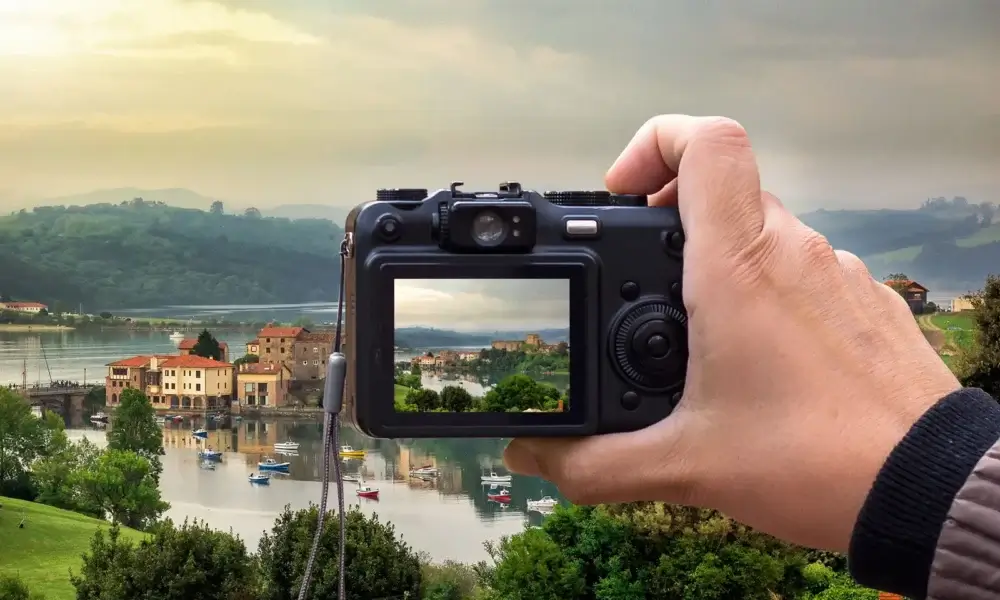Hugo Barbier Camera Toilette: Exploring the Fascinating World of Camera
In the ever-evolving intersection of photography and technology, innovators and artists continuously push the boundaries of what’s achievable. Among these visionaries is Hugo Barbier, a notable French photographer and inventor celebrated for his groundbreaking creation: the Hugo Barbier Camera Toilette. This one-of-a-kind and eccentric invention has made a significant impact on the photography world, introducing a fresh and unique perspective on the art of capturing life’s moments.
In the following article, we will take a deep dive into the captivating universe of the Hugo Barbier Camera Toilette, uncovering its origins, design, functionality, and the profound influence it has exerted on the realm of photography.
Table of Contents
The Genesis of Hugo Barbier Camera Toilette
Hugo Barbier, hailing from Paris and born in 1972, exhibited an early fascination with photography and inventiveness. A relentless exploration of diverse photographic techniques marked his formative years. However, it was a serendipitous encounter within the confines of a public restroom that would pivot his life’s trajectory.
In the year 1998, while embarking on a cross-country journey through rural France, Barbier found himself at a picturesque rest stop along the highway. It was during this brief respite that he chanced upon a malfunctioning security camera within the restroom’s confines.
This unexpected discovery ignited a spark of inspiration within Barbier’s imaginative psyche. He swiftly recognized the remarkable potential inherent in sitting a camera in such an intimate and unguarded space, affording the opportunity to capture human moments in an unprecedented manner candidly. This profound realization catalyzed the inception of the Camera Toilette.
The Design and Engineering
In his pursuit to bring his vision to life, Hugo Barbier embarked on a remarkable journey marked by innovation and resourcefulness. His initial hurdle involved crafting a camera capable of enduring the harsh and often unhygienic environments found in public restrooms.
Following months of persistent experimentation and close collaboration with skilled engineers, he succeeded in fashioning a bespoke camera enclosed within a waterproof, bacteria-resistant casing.
Fondly christened the Camera Toilette by Barbier, this pioneering creation came equipped with cutting-edge photographic equipment. It boasted a high-resolution digital sensor, a wide-angle lens, and a discreet illumination system adept at adapting to the often dimly lit conditions of restroom spaces. Notably, in a conscientious effort to uphold privacy and security, the camera was designed without any outward indicators, rendering it virtually inconspicuous to restroom visitors.
Functionality and Capturing Candid Moments
The Camera Toilette is as inventive in its functionality as it is in its design. This camera operates autonomously, eliminating the need for human intervention while it captures moments. It makes use of facial recognition technology to identify when an individual enters the restroom, ensuring that only people are included in the photographs, leaving out empty spaces. As soon as a visitor steps into the camera’s view, it initiates the capture of still images at a rapid pace of one per second.
Thanks to its inconspicuous design and automated operation, the Camera Toilette excels at capturing the most unguarded and authentic moments in people’s lives. These moments encompass a broad spectrum, ranging from amusing expressions to deep moments of contemplation, all occurring within the seclusion of a restroom. Barbier conceived this as an unparalleled approach to revealing the unadulterated and unscripted human experience, and he achieved precisely that.
Controversy and Ethical Concerns
It’s imperative to recognize that the Camera Toilette has generated considerable controversy from its very inception. Detractors argue that the notion of photographing individuals without their explicit consent in such an intimate setting represents a stark breach of privacy. Furthermore, there are apprehensions regarding the potential misuse of the images that are captured.
In response to these concerns, Hugo Barbier is swift to come to the defense of his creation, underlining that the Camera Toilette is not intended as an encroachment on personal privacy.
He asserts that his primary aim was to seize the essence of humanity during its most unguarded moments, delving into the genuine emotions and expressions that individuals exhibit when they believe they are in seclusion. To address the ethical dilemmas, Barbier has meticulously introduced stringent access controls and encryption mechanisms, ensuring that the images remain safeguarded and are not disseminated without explicit consent.
Impact on the Art of Photography
The Camera Toilette has unquestionably left a profound mark on the realm of photography. It has provocatively questioned established notions surrounding privacy, candid photography, and the frontiers of artistic expression. Countless photographers and artists have found inspiration in Barbier’s pioneering work and have embarked on their own explorations of candid photography across diverse settings.
In addition, the Camera Toilette has ignited discussions regarding the intersection of art and ethics. It compels us to grapple with inquiries about the extent to which artists should push boundaries in their pursuit of capturing unadulterated, genuine moments and the ethical responsibilities they bear towards their subjects.
Notable Exhibitions and Works
The Hugo Barbier Camera Toilette has taken center stage in numerous prominent art exhibitions across the globe. Among these, the “Through the Lens of Secrecy” exhibition held at the prestigious Louvre Museum in Paris stands out as the most renowned.
This exhibition showcased a thoughtfully curated selection of images captured by the Camera Toilette, provoking a mix of admiration and controversy as attendees grappled with the unique perspective it presented.
Barbier’s portfolio, highlighting some of the most compelling images immortalized by the Camera Toilette, has garnered international acclaim. His body of work has found its place in the pages of photography magazines, adorned the walls of art galleries, and even sparked discussions within academic circles about the evolution of photography as a distinct art form.
Conclusion
The Hugo Barbier Camera Toilette disrupts conventional notions of privacy and photography, offering a distinct view of unscripted moments. While ethical issues persist, it has left an indelible mark on photography, stimulating debates about its limits.
In its quest to stretch the boundaries of art and technology, it serves as a reminder of the untapped potential within photography, encouraging reflection on ethics, imagination, and the lens’s capacity to encapsulate the human experience.






